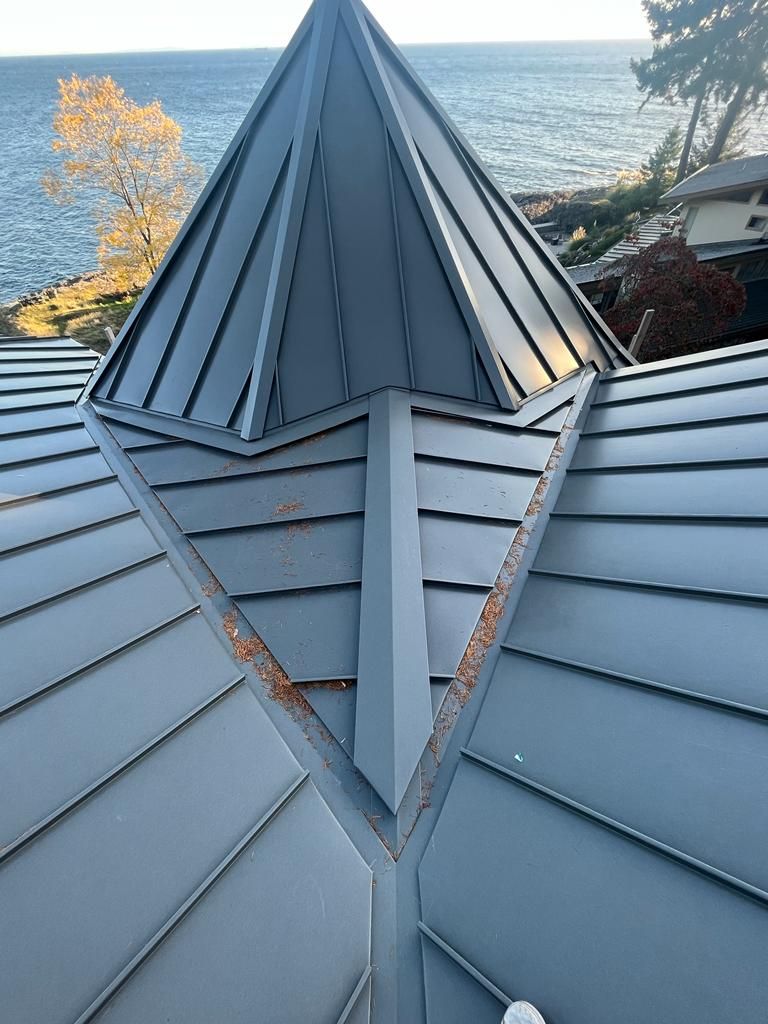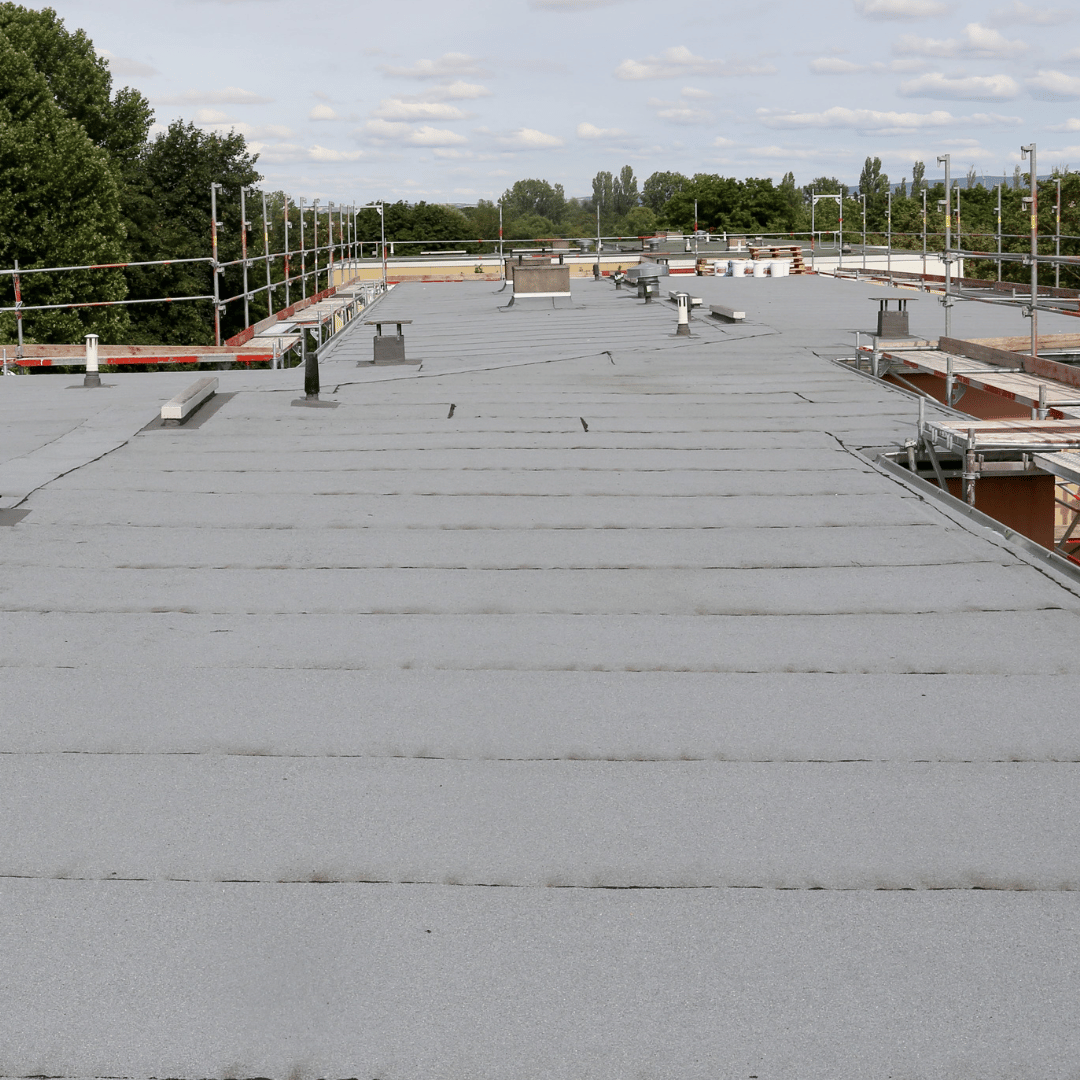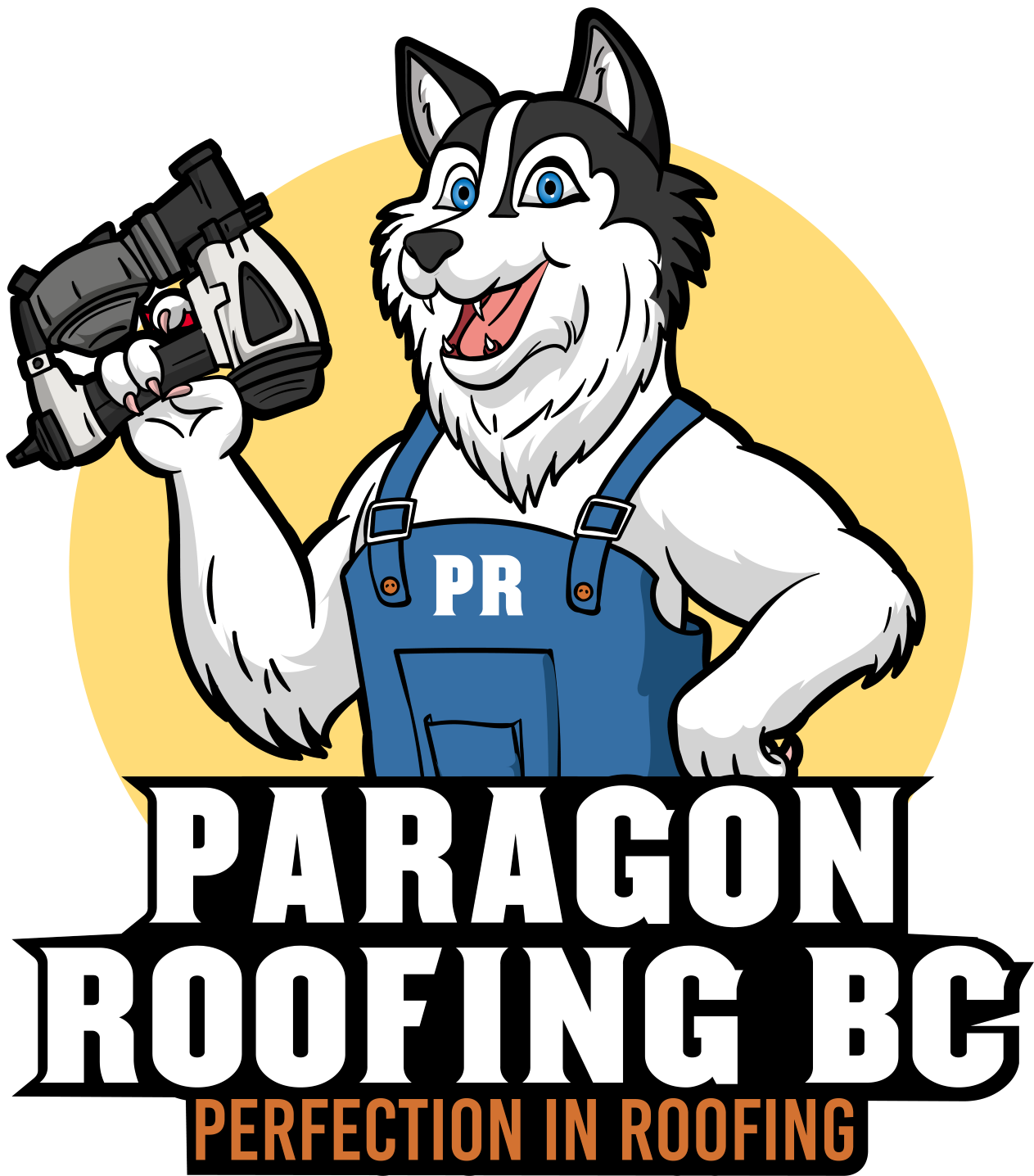Moss,the Silent Grower
Moss is one of those quiet, unassuming intruders that can sneak up on you if you aren’t paying attention—especially in our wet, temperate climate here in North Vancouver. The regular rainfall and mild temperatures create the perfect environment for moss to thrive, and it’s not uncommon to see patches of green fuzz creeping across rooftops throughout the Lower Mainland. If you’ve noticed that your roof has taken on a fuzzy, greenish hue, you’re definitely not alone. Many homeowners in Vancouver, Surrey, Delta, and of course North Van have faced the same thing. Over the years, I’ve come to appreciate that this little plant—though it might look cozy—can create some big problems if left unchecked.
Moss may appear soft, but it holds onto moisture like a sponge. On a roof, that dampness can lead to the slow deterioration of shingles, potential leaks, and even structural damage. And it doesn’t just stop at your roofline. Moss spores can travel, settling in the gutters, along siding, and anywhere else moisture is present. I’ve lost count of how many times a seemingly harmless patch of moss expanded into a major headache for homeowners. That’s why moss removal north vancouver isn’t just a cosmetic project; it’s an investment in the health and lifespan of your roof.
Why Moss Grows So Quickly in North Vancouver
Folks sometimes wonder why we have to deal with moss so often. North Vancouver is known for breathtaking mountains, lush forests, and more rainy days than we probably care to count. Combine frequent moisture with moderate temperatures and occasional cloud cover that prevents roofs from drying out fully, and you’ve got a recipe for rapid moss growth.
Moss spores love moisture, and as soon as they find a damp, shady area with minimal direct sunlight, they spread like wildfire. A single spore can sprout clusters of moss within weeks, and you’d be amazed how quickly those clusters can double or triple if conditions remain favorable. It’s sort of like that one dandelion that magically appears on a neatly manicured lawn—before you know it, you’ve got an entire colony on your hands.
What’s more, roofs in this region often have multiple layers and crevices where debris accumulates. Leaves, pine needles, and other organic matter form a natural bed for moss, trapping even more water and helping those spores flourish. If you’ve ever glanced up at your shingles and noticed stray leaves clinging to corners, that’s your signal to check for new moss growth—because if you leave it, chances are it’ll be back in full force.
Why Removal Matters
Some people ask me, “Harman, why bother removing moss when it just seems to come back?” Honestly, that’s a fair question. Moss can be resilient, but preventing its spread is crucial for long-term roof health. Think of it like going to the dentist: even though you might end up with a new cavity years down the road, it’s not a reason to avoid taking care of the ones you have now.
When moss soaks up water, it creates a moist environment that can erode shingles, break down roofing materials, and even compromise the underlying wood. Over time, leaks might form, or the roof’s structural integrity could weaken. Repairs can get expensive fast, so consistently managing moss growth is far more cost-effective than ignoring it until you need major fixes.
In North Vancouver, we also have to think about the rainfall and the freeze-thaw cycles during cooler months. Trapped moisture beneath moss can freeze overnight, expanding and contracting in microscopic pockets under shingles. Repeated freezing and thawing can crack shingles or cause them to lift. If you’ve ever had to replace a roof before its time, you know it’s not something you want to tackle frequently.
Safe Tools and Techniques
There are dozens of approaches to moss removal, but not all methods are safe for your roof. Some folks resort to pressure washing, believing that blasting moss away at high speed is the quickest fix. I’d caution against that: high-pressure jets can strip off granules from asphalt shingles, damage the roof’s surface, and lead to more trouble than you started with. A less aggressive strategy is usually much better for long-term results.
When I tackle moss removal north vancouver, my go-to technique involves gentle brushing and the use of specialized, roof-friendly cleaning solutions. Soft-bristle brushes or brooms can help dislodge most of the moss without damaging shingles. If a cleaning solution is necessary, it’s typically biodegradable and specifically formulated to kill moss without harming the rest of your property or the environment.
Being methodical helps, too. I try to work from the top of the roof down, so any moss or debris rolls off naturally. It’s not the fastest process, but the care you put into each step often results in a longer-lasting clean roof. The last thing you want is to remove half the moss only for the leftover spores to spread again in a couple of months. Thoroughness is key.
Maintaining a Moss-Free Roof
After a thorough moss removal, I can’t stress enough how important it is to maintain your roof. Vancouver’s climate will inevitably continue to support moss growth, so think of roof maintenance as a regular part of your home care routine—like cleaning gutters or pruning shrubs.
Regular Inspections
About once or twice a year, especially after the rainy season, it pays to climb up (safely, of course) or hire a professional to check for any new moss. Early detection and quick action mean less effort and cost.
Gutter Cleaning
A clogged gutter can lead to water overflow, which can then find its way under your shingles. Clear gutters help ensure that rainwater flows properly off the roof, reducing dampness in shady spots where moss likes to take root.
Trimming Trees
Overhanging branches cast shade and drop leaves, which trap moisture. By trimming them back, you let more sunlight reach the roof, helping it dry out faster.
Roof-Friendly Treatments
Some folks choose to apply preventative treatments annually or every couple of years. These treatments can deter moss growth and keep those spores at bay.
A little TLC goes a long way. I’ve seen roofs that remain practically moss-free for years just by following a consistent maintenance schedule. It’s not some magic formula; it’s just paying attention to the signs and stepping in before things get out of control.
Best Times for Moss Removal
Working around the weather is part of the job when you’re dealing with rooftops in North Vancouver. In my experience, spring and early fall are typically the sweet spots. During these seasons, the temperatures are mild, and you’re more likely to find a relatively dry window to safely remove moss. Summer can be hit or miss—sometimes it’s wonderfully sunny, other times it’s suddenly pouring. Winter, with its rain and occasional snowfall, is usually not ideal for extensive roof work unless it’s an emergency.
Spring is great because it follows the heavier rains of winter, so any moss that might have sprouted under the moisture can be addressed before it spreads. Early fall is equally good, as you can prepare the roof for the winter months ahead. If you time it right, you can also handle gutter cleaning and pruning in one go.
Common Mistakes People Make
One of the most frequent mistakes is believing that a single quick pass over the roof will solve the moss problem for good. Moss spores can lurk in hidden crevices, and if they’re not thoroughly removed or treated, they’ll pop right back up. Another misstep is using abrasive materials or harsh chemicals that do more damage to the roof than the moss itself.
I’ve met homeowners who tried a do-it-yourself approach with strong bleach, only to end up harming their shingles and discoloring siding or nearby plants. A better approach is to use specialized products designed for roofs. If you’re unsure which products are safe, consider asking a roofing professional or checking credible sources.
Another mistake is going at it alone without proper safety gear or ladder support. Roofs can be slippery—especially with moss in the mix. I don’t want to sound like a broken record, but personal safety should always come first. No roof is worth a broken bone.
Environmental Impact in the Lower Mainland
Living in the Lower Mainland, we’ve got to be mindful of our environmental impact. Storm drains here lead to local water bodies, so any harsh chemicals you rinse off the roof can eventually make their way into streams, rivers, or the ocean. That’s why biodegradable, eco-friendly moss treatments are often recommended.
In my own work, I make an effort to use gentle cleaning solutions that break down without harming wildlife or plants. We live in a beautiful region, and it’s on all of us to keep it that way. If you’re handling moss removal on your own, remember to check the labels on cleaning products and opt for those that are specifically geared toward being safe in aquatic environments.
The Value of Local Expertise
Sure, the internet is brimming with how-to videos and quick-fix solutions, but nothing quite beats local experience. North Vancouver’s unique climate demands approaches that might not be covered in generic online tutorials. Over the years, I’ve experimented with different techniques to see which methods last the longest. And yes, sometimes that meant discovering that a particular solution worked great in theory but wasn’t so hot in our beloved rainy environment.
Local roofers understand the nuances of moss removal here in North Vancouver—like the fact that the city has microclimates. A house closer to the mountains might have different conditions than one that’s lower down near the water. Similarly, a shady backyard in Surrey might support moss growth more aggressively than a sunnier property in Delta. Having that firsthand knowledge helps tailor the removal process so you’re not just guessing.
One thing I’ve learned is that you really can’t take a one-size-fits-all approach. Every roof has its own quirks—different shingle materials, varying slopes, and unique sun exposure. Sometimes I’ll see an older roof where the shingles are more fragile, which means using an ultra-gentle method. Other times, the roof might be brand new and can handle a bit more brushing without risk of damage.
Real-World Experience from a Local Roofer
If I look back over the years, some of the most rewarding projects were the ones where homeowners initially thought they needed a full roof replacement because the moss was so extensive. Imagine the relief on someone’s face when they find out that a good, comprehensive moss removal and a little maintenance can extend the roof’s life by several more years.
I recall one couple in North Van who had a dense layer of moss that almost looked like a plush green carpet. They were sure the entire roof was toast. After carefully peeling back the moss, cleaning the surface, and applying a roof-friendly treatment, the shingles underneath were still structurally sound. The color was a bit faded, but the integrity was intact. That’s a pretty big win in my book.
Even though I’ve dealt with my fair share of moss, I’m always learning something new. Moss removal can feel repetitive, but every roof has a story. Sometimes you’ll see interesting patterns where water flows, or you’ll discover how a hidden gutter leak was fueling moss growth from below. Being curious and detail-oriented pays off when you want long-lasting results.
Building Trust in Our Community
I’m a big believer in earning trust the old-fashioned way: by doing what’s best for the homeowner and the roof. It’s not about quick fixes. It’s about ensuring that each roof I touch stays healthy for as long as possible. That includes being transparent about the process, the products I use, and the expectations moving forward.
Over the years, neighbors have referred neighbors. People talk, especially in smaller communities in the Lower Mainland, and word spreads fast if you’re someone who cuts corners. I’d rather lose a few hours of time making sure everything is done right than rush through the job and leave behind half-dead moss that’s ready to come roaring back.
We all share the same rainy climate and face the same roofing challenges. If there’s one thing I want people to take away, it’s that moss removal north vancouver isn’t a one-time, set-it-and-forget-it job. It’s part of ongoing roof care. The more you stay on top of it, the less likely you are to face big, expensive issues later on.
Small Touches That Make a Big Difference
Sweep Away Debris
This might sound simple, but removing leaves and branches from your roof regularly can drastically reduce the opportunity for moss to take root.
Optimize Ventilation
Good attic ventilation keeps temperatures and moisture levels in check, which helps reduce overall dampness.
Watch for Warning Signs
A discolored patch on your roof or stray moss visible from ground level might be small, but it’s an early indicator. If you catch it fast, you’ll save yourself time and money.
Document Each Cleaning
Keep track of the date and what method you used. If you notice the moss returns quickly, that might mean the approach needs a tweak. Data can be your best friend.
A Quick Nod to Our Vancouver Humor
Let’s face it: we’re used to the rain here. Some people joke that they can never find their sunglasses. We can’t change the weather, but we can adapt to it—just like we do when we grab that umbrella or don a waterproof jacket. Roof care is kind of the same principle. We can’t stop the rain from falling, but we can keep our roofs prepared and well-maintained.
And hey, if you’re ever feeling bummed about persistent moss, just think: somewhere in the world, people are complaining about scorching heat. At least here we can enjoy relatively moderate temperatures most of the year. Moss might be the trade-off, but we can handle it.
Final Thoughts (Without Being “Salesy”)
At the end of the day, dealing with moss is just another part of homeownership in our corner of British Columbia. With careful moss removal, proper tools, and consistent maintenance, you can protect your roof from premature wear and tear. It’s not always glamorous work—no one is filming a home-improvement reality show about it—but it’s essential nonetheless.
I hope this discussion sheds some light on why moss removal north vancouver is crucial, how to tackle it effectively, and why paying attention to the little details makes a big difference. If you’re up there brushing away moss, remember to be safe. And if you ever feel unsure about your approach, take a step back, reassess, and consider reaching out for advice. It’s better to proceed slowly and carefully than to rush and regret a misstep later.
North Vancouver is a special place—rain and all. I wouldn’t trade it for anything. Yes, moss is part of the deal, but with a bit of knowledge and elbow grease, it doesn’t have to be a problem. You can keep your roof in tiptop shape, stay dry indoors, and keep those picturesque views of the city skyline from your windows free of any rooftop leaks.
That’s all from me, Harman, your local friend and roofer here at Paragon Roofing BC. Stay prepared, keep an eye on that roof, and never let a little green fuzz get you down. After all, in the grand scheme of things, moss is just another quirk of life in our beautiful, rain-kissed region. Embrace the occasional drizzle, enjoy the lush greenery, but draw the line when it comes to uninvited moss on your shingles!





